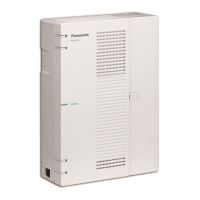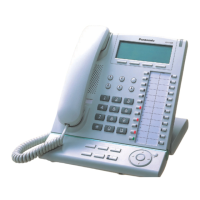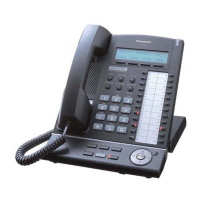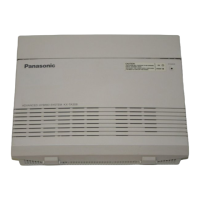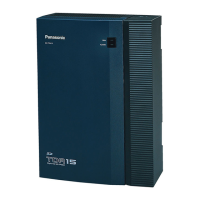PIL Reference
2.4.5 PBX Configuration—[3-5] Trunk—DISA
3.1.7 Caller ID
Description
The PBX receives caller information, such as the caller's name, telephone number, date and time, through
the Trunk line. This information can then be shown on the phones with a display.
Conditions
[For SLT extensions]
Conditions Note
• Signal type for SLT complies with ETSI (European
Telecommunications Standards Institute)-type FSK and Bellcore-
type FSK.
• Visual Caller ID and DTMF Caller ID are not supported.
Caller ID notification to SLT is
only conducted when receiving
calls.
SLT displays the caller information sent from a trunk or the
extension. Displayed information is depended on a phone. The caller
information is sent to the extension as follows:
• When the PBX receives the name (max. 16 characters),
telephone number (max. 20 digits) or indication reason
information from the carrier by an analog trunk, it sends that
information to an extension as it is.
• The date and time information of the PBX is sent as the caller
information.
• The name in the caller
information uses the character
code IA5.
• Through Web Maintenance
Console, the Installer can set
whether each SLT receives the
caller information.
[For all extensions]
Conditions Note
Analog trunks should be provided with a Caller ID notification service
by a carrier.
Through Web Maintenance
Console, the Installer can set
whether the PBX receives the
caller ID from a carrier.
When a Caller ID is received from a trunk, the PBX searches System
Speed Dialing for the modified Caller ID. If a name corresponding to
the modified Caller ID is registered, the name information of the
caller (Display Name) registered in System Speed Dialing is sent to
the called extension. Otherwise, the name in the caller information is
sent.
Reference:
• 3.1.1 Calling Line Identification
(CLI) Distribution & Call Block
• 3.3.1 System Speed Dial
When receiving an intercom call, the extension name and number of
the caller are sent to the extension.
When Transfer Recall is operated, “RCL:” is added to the head of a
Caller ID. And the Caller ID is notified to the operated extension.
Even if the caller's name is sent, the name may not be shown
depending on the type of extension.
3.1.7 Caller ID
Feature Manual 29
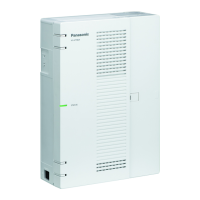
